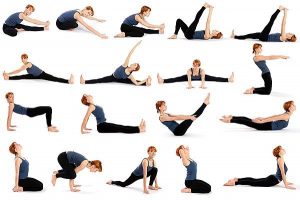
Many beginner yoga students often as, what yoga poses are right for them? Which ones are dangerous and which ones are beneficial?…
Of course, as it is the case with most questions about yoga, the answer can be extremely simple or infinitely complex. To me, the truth is that all yoga poses can be dangerous and they can all be equally beneficial. There is not right yoga pose for someone, there is the right yoga pose for some-moment, if done right of course.
What I am trying to say is that a headstand pose can be extremely dangerous and inappropriate for a beginner student. It can also be extremely dangerous for advanced students too if they are not careful with their approach. On the other hand, those who can safely perform a headstand will reap wonderful benefits.
With this I am also trying to point out that there are no right or wrong yoga poses “for us”. There is only right or wrong yoga poses for different moments in our life. Like the handstand, it may not be the right yoga pose for us when we start to practice, but after twenty years of practice it may be the only yoga pose we need to do. Similarly, we may think a pose like shavasana is always the right pose for us, but some time shavasana may not be appropriate.
Righteous Yoga Poses
Most students who are new to learning yoga are not aware of two paradoxical and fascinating facts. Number one, there are thousands and thousands of different yoga poses. Number two, you only need one to reach Samadhi.
History teaches us that back in the day when the practice of yoga was being developed, the great yogis would only practice one pose, and that was the sited pose. The goal, as it is explained in Patanjali’s Yoga Sutras, was to remain sited and still, for long periods of time, in order to calm the mind and, eventually, reach liberation.
As time went on, Patanjali’s teachings became diluted. His students began to experiment with different sited positions, developing 4 yoga poses, and then 8 and then 16 and so on. Around a century ago, East met West and the practices of yoga got mixed up with Swedish gymnastics, leading to the development of dozens of new poses. Other political events, such as Britain’s colonization of India, lead to the development of additional poses, such as the popular warrior poses, practiced by independent yogic groups of rebels who would fight against the British regime.
I remember the first time I learned all this I was shocked. I thought all the yoga poses I was learning in my yoga class where ancient poses developed by Vedic seers. It wasn’t until a few years that I learned how young this side of yoga is.
My conclusions, at the time, where quite simple, if the sited pose is the original yoga pose, then that is the most important one and perhaps the only one that should be practiced. The problem with that, however, is that many people, especially in today’s “modern” world, are unable to sit still in a comfortable position for periods of time long enough to bring in concrete results. This is where all those thousands of yoga poses come in handy. The use of props for some yoga poses is the perfect example of how the practice of yoga has been modified to fit the needs of new practitioners.
Which Y0ga Pose to Choose?
Going back to our questions about the most dangerous and most beneficial yoga poses, my intention is to empower you to make your own choices. Surely enough, this won’t be possible for all students. Some of us are way too new to the world of yoga to be able to know and feel which yoga poses are damaging or beneficial for us, that is where support from an experienced yoga teacher comes in handy. For those of you who have been practicing for a while, I invite you to explore your body and welcome any yoga pose that calls your heart. Try it out, drop in, notice how you feel before doing it, during and after. What adjustments can you make to make the pose safer and more beneficial?…
Perhaps the question we need to ask first is why you want to do that particular pose. Is it because your teacher told you to do it and you feel forced to comply? Or is it that you saw another yoga student doing it and you though it looked cool?
The desires and intentions we have in regards to our yoga practice are just as important as our approach. Those who come to yoga seeking power and fame will sooner or later come to terms with the true spirit and use of the yoga practice. On the other hand, those who approach the practice of yoga with an open heart, patience and humility, will find love, truth, peace and beauty in every pose.
About the Author
Bruno Treves helps people get out of pain, feel better and improve their lives.
Bruno’s approach focuses on alternative medicine and natural healing methods.
View all of Bruno’s posts here.






